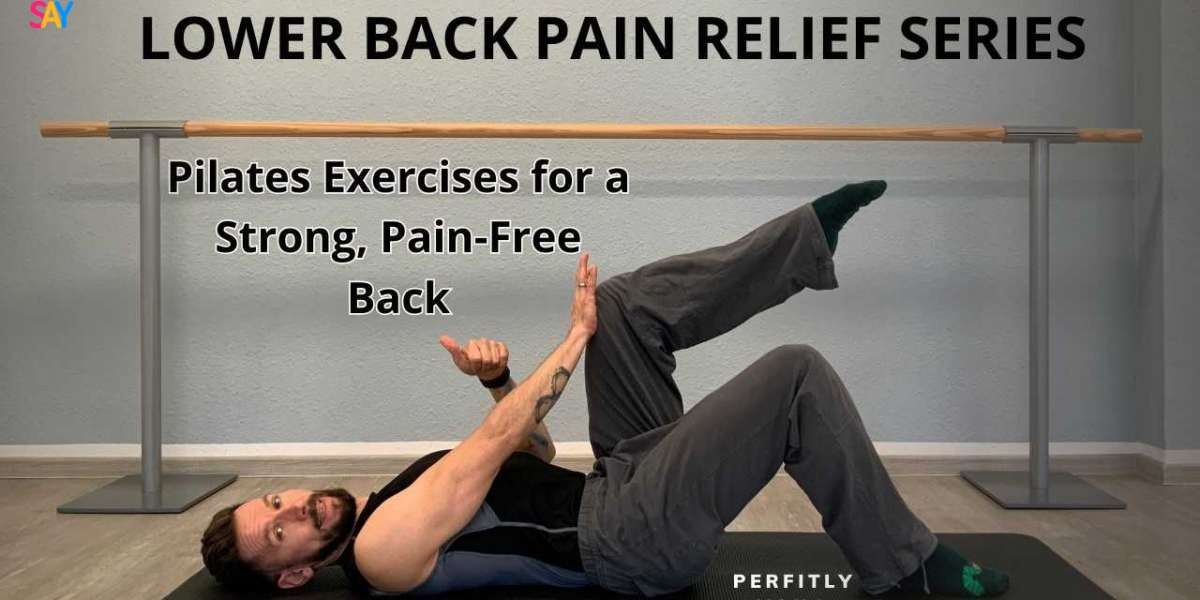Introduction: Why Choose Pilates for Pain Relief?
Living with chronic pain can significantly impact your quality of life, making even simple tasks challenging. While there are various methods to manage pain, Pilates has emerged as a highly effective and holistic approach.
Pilates is a low-impact exercise system designed to strengthen muscles, improve flexibility, and enhance body awareness. Its targeted movements are especially beneficial for alleviating back pain, joint discomfort, and posture-related aches. In this guide, we’ll explore how Pilates for pain relief can transform your well-being.
1. Understanding Pilates and Its Core Principles
Pilates, developed by Joseph Pilates in the early 20th century, focuses on controlled movements, breathing, and alignment. Unlike high-intensity workouts, it emphasizes quality over quantity, making it suitable for individuals with chronic pain or physical limitations.
Key Principles of Pilates
- Concentration: Mindful movement to ensure proper form.
- Control: Precision in every motion to prevent strain.
- Centering: Building core strength for stability.
- Flow: Smooth, continuous movements.
- Breathing: Coordinated breath control to enhance relaxation.
2. How Pilates Relieves Pain
Pilates addresses pain at its root by targeting muscle imbalances, poor posture, and lack of flexibility. Here's how it works:
a) Improves Core Strength
A strong core supports the spine and reduces stress on surrounding muscles, alleviating back pain.
b) Enhances Posture
Pilates helps correct posture-related issues that often lead to neck, shoulder, and back pain.
c) Boosts Flexibility
Tight muscles are a common source of pain. Pilates increases flexibility, reducing tension in areas like the lower back and hamstrings.
d) Promotes Relaxation
Controlled breathing and mindful movements encourage relaxation, helping to relieve stress-related pain.
3. Common Pain Conditions Improved by Pilates
Pilates is effective for managing a range of chronic pain conditions:
a) Lower Back Pain
By strengthening the core and improving spinal alignment, Pilates alleviates pressure on the lower back.
b) Joint Pain
Low-impact movements reduce stress on joints, making Pilates ideal for arthritis sufferers.
c) Neck and Shoulder Pain
Exercises targeting upper body posture help release tension in the neck and shoulders.
d) Sciatica
Pilates stretches and strengthens muscles around the sciatic nerve, relieving discomfort.
4. Essential Pilates Exercises for Pain Relief
Here are some beginner-friendly exercises to get started:
a) Pelvic Tilt
- Target: Lower back pain.
- How to Do It: Lie on your back with knees bent. Slowly tilt your pelvis upward, pressing your lower back into the mat. Return to the starting position. Repeat 10 times.
b) Cat-Cow Stretch
- Target: Spinal flexibility and posture.
- How to Do It: Start on all fours. Arch your back upward (cat), then drop your belly downward while lifting your head (cow). Repeat 10 times.
c) Shoulder Bridge
- Target: Core strength and hip flexibility.
- How to Do It: Lie on your back with knees bent. Lift your hips toward the ceiling, creating a straight line from shoulders to knees. Lower gently. Repeat 10 times.
d) Side Leg Lifts
- Target: Hip and lower back pain.
- How to Do It: Lie on one side with legs straight. Slowly lift the top leg upward, then lower it. Repeat 10 times per side.
5. Benefits of Pilates for Pain Management
Pilates offers numerous benefits for individuals seeking pain relief:
a) Non-Invasive and Safe
It’s a low-impact exercise suitable for all ages and fitness levels.
b) Customized to Individual Needs
Exercises can be modified based on your pain points and limitations.
c) Long-Term Solution
Unlike quick fixes, Pilates builds sustainable strength and flexibility to prevent future pain.
6. Integrating Pilates into Your Routine
To maximize the benefits of Pilates for pain relief, consistency is key.
Tips for Success:
- Start Slowly: Begin with basic exercises and gradually progress.
- Seek Professional Guidance: Work with a certified Pilates instructor for personalized support.
- Practice Regularly: Aim for at least 2–3 sessions per week.
- Listen to Your Body: Stop any movement that causes discomfort.
7. Combining Pilates with Other Pain Relief Methods
While Pilates is highly effective, it can be complemented with other approaches:
- Physical Therapy: For specific injuries or chronic pain conditions.
- Massage Therapy: Relaxes tight muscles and improves circulation.
- Yoga: Enhances flexibility and mental relaxation.
- Healthy Lifestyle Choices: Maintain a balanced diet, stay hydrated, and prioritize sleep.
8. Success Stories: Real-Life Impact of Pilates
Case Study 1: Sarah’s Back Pain Relief
Sarah, a 35-year-old office worker, struggled with chronic lower back pain. After integrating Pilates into her routine, she noticed significant improvement in posture and a reduction in pain within three months.
Case Study 2: John’s Journey with Sciatica
John, a 50-year-old runner, used Pilates to stretch and strengthen his hip muscles. This minimized his sciatic pain and allowed him to resume running pain-free.
Conclusion: A Pain-Free Life with Pilates
Pilates is more than just an exercise—it’s a pathway to holistic pain relief and improved quality of life. By focusing on controlled movements, breathing, and alignment, it addresses the root causes of pain while promoting overall wellness.
Whether you’re dealing with chronic back pain, joint discomfort, or tension from poor posture, Pilates offers a safe and effective solution. Start your journey today and experience the transformative power of Pilates for pain relief.







